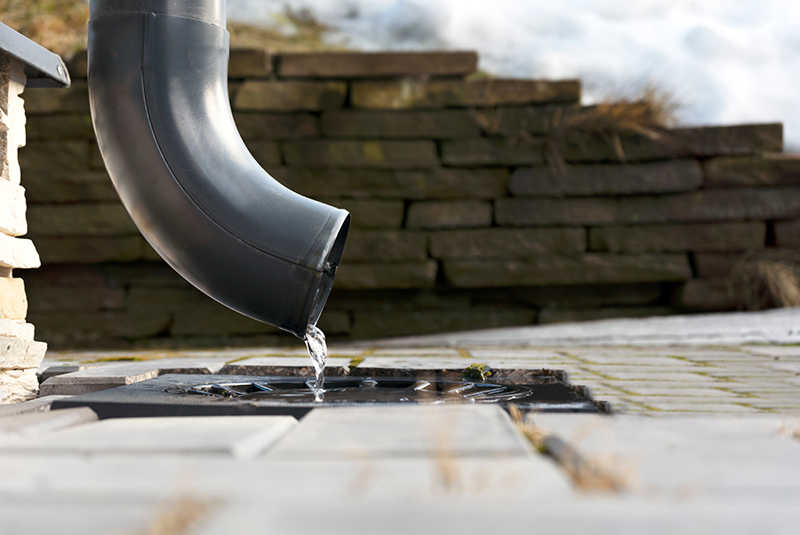The Fall presents the ideal window to address many of the ills that are created by the stress and heat of the summer. Turf and plant material that has been under of the constant stress of heat, humidity, over watering, underwatering and any other less than optimal environmental condition, have the reprieve heading into the cooler, shorter and less temperamental days of Autumn.
This meteorological reset offers a chance to evaluate where your landscape can be enhanced. While we initially look to the turf and the plants in a landscape, the full scope of your property should come under review as there is no better time than now to complete those landscape projects that could benefit from drainage.
In this article, we will focus on the residential side of drainage projects and offer some solutions to one of the most common drainage problems we see; the management of downspout runoff. The yellowing or thinning turf adjacent to these areas may not be simply from the stress of the summer, it could also be a sign of an overabundance of water in the area that needs to be moved elsewhere on the property. To handle downspout runoff, we see a few solutions being used as common practice:
1. The ultra economy, ineffective splash block or short length of corrugated pipe.


Neither of these solutions move the water far enough away from the home and will likely allow the water to create issues with the foundation. Can’t say how often we see a million-dollar home with some of the two above solutions!
2. Direct piping underground



Installing PVC downspout adaptors works very well when connecting a downspout in a “low concern” application. Low concern applications include:
- No overhanging trees
- Low risk for windblown debris
- Roof is in good shape. May or may not have gutter guards
This application has drawbacks as addressing a clog may require a snake or simply be challenging in terms of maintenance. The pictures above show a few different methods. All have a downspout adaptor for a clean connection to the downspout. Having a plug or grate attached to a sweep tee will make accessing the system much easier. This is the most common solution to get the downspout to underground piping. If clogging occurs before the winter, you run the risk of the pipe freezing and causing complications to the system that need repair.
3. The third and most effective solution is the installation of a catch basin.

These allow for an easily accessible and highly effective way to capture run off. They can be used in any application but are most effective when you have:
- Overhanging trees
- Roof is not in great shape
- Poor draining soils
- Abundance of standing water after rain events
Installing a catch basin in lieu of direct PVC connection allows for a break between the gutter and the downspout. This will prevent any issues from freezing, allow of easier cleanout and maintenance of the system and allow for more volume of water to flow through the system than the standard PVC connection.
Adding a catch basin filter is adding another layer of insurance for the systems. These are easily taken out of the basin and cleaned of debris.

Choosing one of the three methods above to get the runoff into the system is the first step in getting the water underground. Look back to the archives to size the pipe and make an informed decision to choose the type of pipe to be used. The runoff will then need to be discharged or stored underground. The NDS calculator outlined in previous articles will allow you to choose the size of the storage for this purpose.
Daylighting the pipe for discharge can be achieved by simply cutting the end of the run to fit the grade or by adding a pop-up emitter at the end of the run.

Be mindful that a pop-up emitter on a 4-inch pipe will only discharge 40 gallons per minute. If the pipe is moving more water than that, adding a wye to run to an additional pop-up emitter may be necessary.
Any drainage project will require disruption to the turf. Autumn allows for the new turf being installed to quickly and easily germinate after this disruption has occurred. Fall offers many reasons to tackle outdoor projects. Considering the ease with which the open trenches can be restored to new is just one of them.
Finally,
Central Irrigation is your source for all your drainage needs. We are fully stocked with PVC, Dual Wall and corrugated pipe. We also carry catch basins, pop up emitters, channel drains and fittings to make sure your project is complete. Regardless of scope and size, Central is your partner in drainage and is always here to help!

